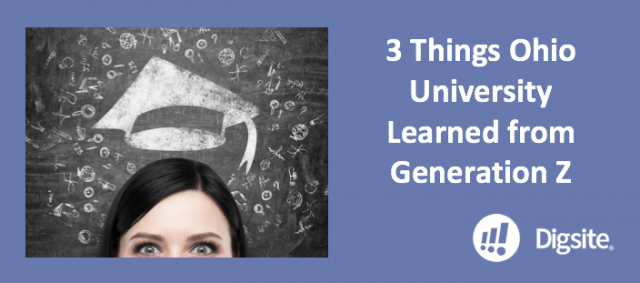
Perfecting the ideal college recruitment ad is an important initiative for a university. Schools aim to create ads that are relatable, exciting, and that represent the university in a positive light. However, once ads have been running for a while, it is important to make sure they are still representative of the university and fit the style preferences for future college students.
This is exactly what Ohio University wanted to find out – if their current recruitment ads (originally aired in 2012) were still the best fit, or if they needed some updating.
A Unique Qualitative Research Tool Uncovers Insights
When thinking about video ads that have multiple components, they can best be analyzed with open-ended, qualitative research. For this reason, Ohio University turned to Digsite® Sprints to conduct a qualitative study to get insights from real prospective students.
A Digsite Sprint is an online qualitative research community that typically lasts a week or less. Through an interface designed to resemble social media, participants can respond to questions, give feedback on marketing concepts, interact with a group, and speak one-on-one with researchers.
Digsite recruited 25 high school students in the Ohio area that were interested in attending college after high school. The high school students found Digsite easy to use, as it is very similar to many social media sites they frequent. They also had a lot of fun completing the activities knowing that their feedback was very important to the future of the ads for Ohio University.
Through all of the discussions surrounding video ads, Ohio University gained three key takeaways from the community.
- Students want to be shown that they belong at your college
- Every student is different, but there are overarching attributes that are important to everyone
- Students want to see ads catered to them
Activity 1 - A Day in the Life:
In a Digsite community, the group is encouraged to interact and share information about themselves. Prospective students shared what a typical day for them looks like. They also discussed their thoughts on potential colleges and what specific college ads (whether it be print, video, etc.) they’ve received and what their perceptions of those ads were.
When we talked about a recent ad they received from college, students were quick to reply about their email inboxes being full of ads and the plethora of information they were receiving. Many also commented about the complexity of keeping track of all this media since it is available in so many channels – by mail, on social media, by email, on YouTube, etc.
Activity 2: Ad or Video Feedback
In our second activity we asked participants to take a look at some specific ads for Ohio University:
- Supportive Professors: https://www.youtube.com/watch?v=F6XENjKpuuc
- Bobcat Pride: https://www.youtube.com/watch?v=rZhXepPt5lk
- Love at First Sight: https://www.youtube.com/watch?v=O9KVLrSQKWM
We also opened up a conversation to generally compare the ads and find out:
- Which of the three ad videos most caught your attention and why?
- Which of the three videos was the most meaningful to you and why?
- Was there anything from any of the ads that you found to be unclear or you had questions about?
In the conversation, we got a variety of (overall positive) responses to all three of the ads. For example, multiple participants noted that they liked how all three of the videos had ended with "it’s y{ }u". The brackets replacing the “o” in “you” symbolize the endless possibilities for any student to be a part of Ohio University.

Each ad depicted different specific elements to the university. Through Digsite’s whiteboard tasks which included a frame from each of the video ads, participants were able to indicate what they liked, didn’t like or what was unclear to them by dragging +, -, and ? symbols onto the board.
Whiteboard Images & Quotes:
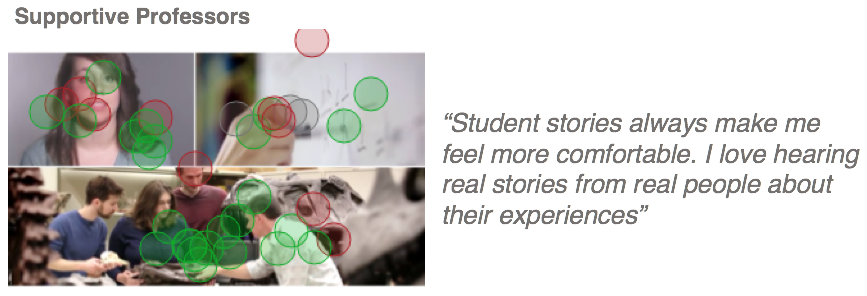
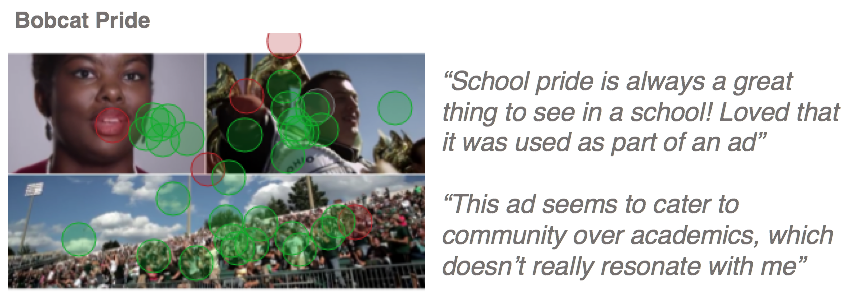
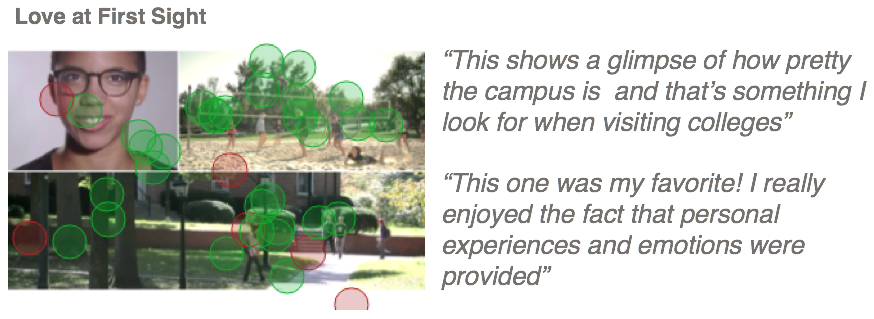
Lesson #1: Students want to be shown that they belong at your college
With all of the endless possibilities and choices students have to make surrounding college, it’s important that they feel like they would belong there. Creating messages that apply to everyone helps students feel comfortable with choosing your university because they feel like they would fit in. Ohio University advertised a variety of elements of their campus, which helped show all students that they belong there, no matter their interests.
Activity 3: What’s Important?
In our next activity we wanted to understand the students’ perceptions about college and what attributes were most important and least important to them when finding a college to attend.
Each student had their own views about what was most important to them but academic reputation came out on top as the most common response to what was most important to them. On the other hand, varsity sporting events appeared to be the least important factor when considering a college to attend.
Lesson #2: Every student is different, but there are overarching attributes that are important to everyone
Every student is unique and looks for different features in a college. While many students found academic reputation and personal attention to students to be the most important attributes when considering a college to attend, there were other students who chose different attributes. One student rated varsity sports events as the most important consideration for them, which showed Ohio University that not everyone looks for the same things. With their current ads, Ohio University shows a variety of campus features including hands-on professors and sporting events, which helps them emphasize all attributes that may be important to students.
Activity 4: Ideal Ad
For our last activity we wanted to see what an ideal ad would look like for these students, after they had a chance to look at the ads Ohio University already had. We asked participants if there was anything the ads were missing that they would have liked to have seen. To our surprise, many of the elements already included in the ads were what was important to them. However, we did get some suggestions about other elements that would have been nice to include. Some ideas included contact information, financial aid information, internship opportunities, and statistics (e.g. student to professor ratio, number of students, how many people receive financial aid).
One participant went so far as to provide a mockup of what her ideal ad would include:
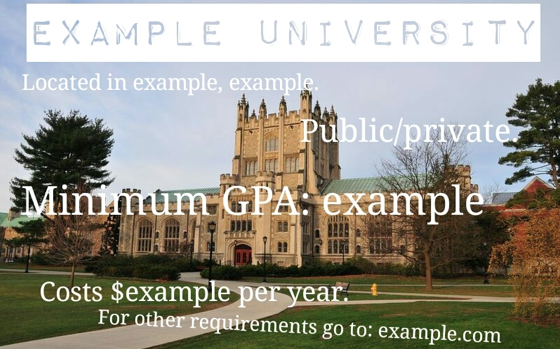
In our last task for the community, we asked participants to share a YouTube link to their current favorite ad. When looking at the ads the participants provided, common themes about being real and authentic emerged. That was good news for Ohio University, since that was a central characteristic of their ads.
Lesson #3: Students want to see ads catered to them
Today’s prospective college students want to see ads catered to them. Hearing real stories from real people makes a message more relatable and personal. Emotional experiences and genuine content helps connect the audience to that message.
Insights from Gen Z
Not only was Ohio University able to talk with their target demographic and get honest feedback on their ads, but they also got insights into the prospective students’ college selection planning process.
They learned the most common sources of getting college information and what criteria was important to students when choosing a college to attend. This helped Ohio University understand today’s high school student and what attitudes and behaviors are important to them.
There’s a lot of misconceptions surrounding the relatively unknown population that is Generation Z. The best way to truly understand them is to talk to them through the use of qualitative research, such as Digsite.
Do you want to see if a Digsite Sprint could work for you? Download the Digsite Sprint Fact Sheet to learn more!
Download the Sprint fact Sheet



